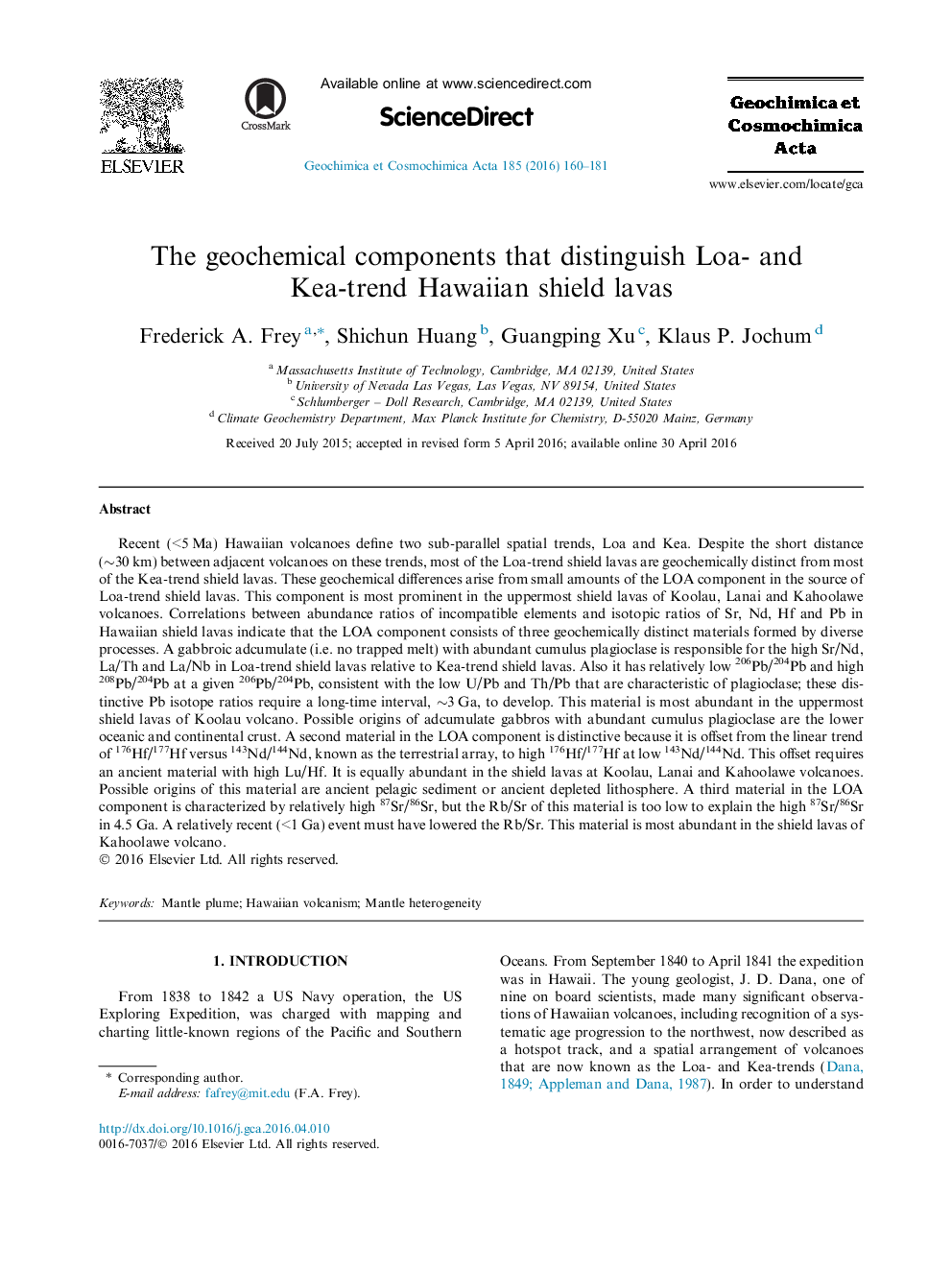| کد مقاله | کد نشریه | سال انتشار | مقاله انگلیسی | نسخه تمام متن |
|---|---|---|---|---|
| 6437358 | 1637972 | 2016 | 22 صفحه PDF | دانلود رایگان |

Recent (<5Â Ma) Hawaiian volcanoes define two sub-parallel spatial trends, Loa and Kea. Despite the short distance (â¼30Â km) between adjacent volcanoes on these trends, most of the Loa-trend shield lavas are geochemically distinct from most of the Kea-trend shield lavas. These geochemical differences arise from small amounts of the LOA component in the source of Loa-trend shield lavas. This component is most prominent in the uppermost shield lavas of Koolau, Lanai and Kahoolawe volcanoes. Correlations between abundance ratios of incompatible elements and isotopic ratios of Sr, Nd, Hf and Pb in Hawaiian shield lavas indicate that the LOA component consists of three geochemically distinct materials formed by diverse processes. A gabbroic adcumulate (i.e. no trapped melt) with abundant cumulus plagioclase is responsible for the high Sr/Nd, La/Th and La/Nb in Loa-trend shield lavas relative to Kea-trend shield lavas. Also it has relatively low 206Pb/204Pb and high 208Pb/204Pb at a given 206Pb/204Pb, consistent with the low U/Pb and Th/Pb that are characteristic of plagioclase; these distinctive Pb isotope ratios require a long-time interval, â¼3Â Ga, to develop. This material is most abundant in the uppermost shield lavas of Koolau volcano. Possible origins of adcumulate gabbros with abundant cumulus plagioclase are the lower oceanic and continental crust. A second material in the LOA component is distinctive because it is offset from the linear trend of 176Hf/177Hf versus 143Nd/144Nd, known as the terrestrial array, to high 176Hf/177Hf at low 143Nd/144Nd. This offset requires an ancient material with high Lu/Hf. It is equally abundant in the shield lavas at Koolau, Lanai and Kahoolawe volcanoes. Possible origins of this material are ancient pelagic sediment or ancient depleted lithosphere. A third material in the LOA component is characterized by relatively high 87Sr/86Sr, but the Rb/Sr of this material is too low to explain the high 87Sr/86Sr in 4.5Â Ga. A relatively recent (<1Â Ga) event must have lowered the Rb/Sr. This material is most abundant in the shield lavas of Kahoolawe volcano.
Journal: Geochimica et Cosmochimica Acta - Volume 185, 15 July 2016, Pages 160-181